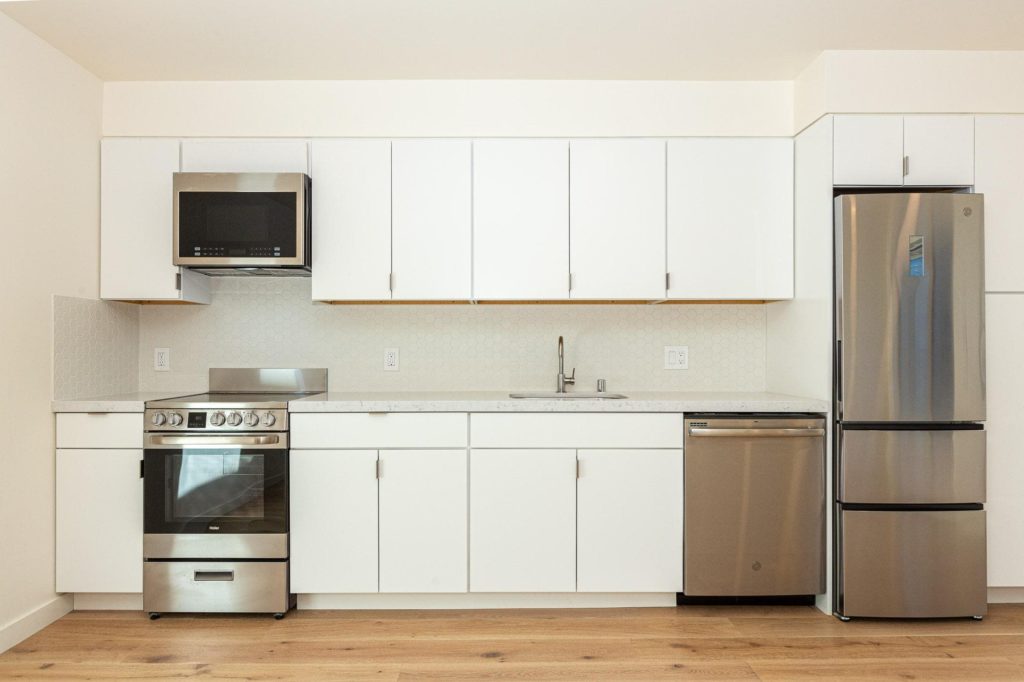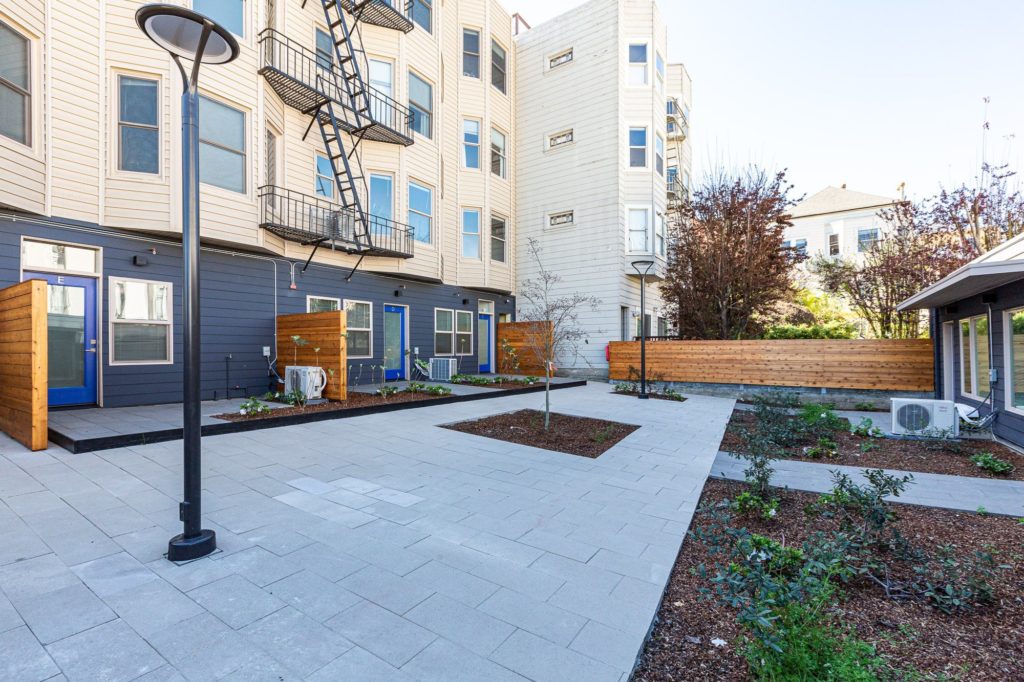Owning and managing properties built 50 to100 years ago in historic and culturally vibrant neighborhoods throughout San Francisco, Oakland, and Los Angeles means classic architecture, unique details, mature and thriving neighborhoods, and great old stories—but it also translates into needed repairs, renovations, renewals, and replacements.
From the time we acquired our first building in 1955, we have driven improvements in our neighborhoods, contributed to the economic vitality of the community, and tackled renovations and continually modernized units.
While it’s not always pleasant to hear construction noise associated with improvement—we do restrict this work to when it will cause the least irritation—the intention is to enhance resident safety and quality, upgrade their living experience, beautify surroundings, and improve the buildings’ environmental efficiency. This is certainly necessary in our 50-year-old-plus properties, including 411 Pierce, 419 Pierce, 2775 Market Street, and 2350 Union, which have both the charm of a bygone era and the upgrades that make them comfortable modern dwellings.
In the past six decades we have learned a lot about maintaining and improving older buildings. Here are some of those lessons:
1. Structural Reinforcements Mean Stronger, Safer Homes
We provide homes throughout California, so we are ultra-diligent in ensuring the underlying structures are never compromised. Residents may see our engineers and contractors looking for and addressing building ‘bones’ to strengthen them and ensure all of our buildings are up to code. We take it seriously. Our older buildings have been seismically retrofitted to improve their strength and withstand potential earthquakes. After being retrofitted, each building is better prepared to withstand the impacts of a natural disaster.
2. Replacing Old Electric, Plumbing, Appliances Supports Modern Lifestyles and Energy Efficiency

While the charm of these older buildings makes them desirable, the original electric and plumbing systems are outdated. Fun fact: In 1920, only one percent of American homes had both electricity and indoor plumbing. Not so today.
To support residents’ modern lifestyles and energy consumption that far exceeds that of five-to-10 decades ago, these systems all needed upgrading to support computers and other electronic gadgets we now rely on. To accommodate today’s lifestyle needs, we have performed major building-scale upgrades to our older properties, including electric and plumbing infrastructure, which in some cases include new water boilers, too.
We are also in the process of upgrading old toilets and appliances to energy efficient models. We encourage residents with older appliances, fixtures, and toilets to allow us to replace them with modern options to preserve efficiency and be more environmentally friendly.
3. Modern Safety Upgrades Save Lives
Compared to past decades, much more is known now about fire and disaster safety. To bring these older buildings to code, prevent the spread of fire, and provide safe evacuation routes, we are in the process of making life-saving fire detection safety upgrades to our buildings including sounders in every unit, pull stations and detection in common areas and a central monitoring system that is monitored 24/7. The result of this is residents can sleep more securely.
4. A Little Paint and Landscaping Adds to the Character of the Buildings

We have learned there is nothing like a new coat of paint and lovely landscaping to keep the buildings clean and well-kept. We have been able to strike a unique balance between apartments’ historical and vintage charm with fresh, modern improvements. While they may be older buildings, they need not look old. Right now, for example, we are excited about new exterior painting and landscaping in progress at many of our properties that will add to the aesthetics of the building. This short-term work promises much longer-term “curb appeal” for residents and beautification for the neighborhood.
5. It Feels Good to Make Equal Opportunity Access Changes
The American Disabilities Act guidelines took effect for apartment communities in 1990, so our buildings built decades earlier have required accessibility modifications. In addition to those that allow disabled people to easily enter, exit and use public areas, we have worked with residents to adapt certain apartment’s interiors with a mix of accessible doors, reachable light switches, and outlets, grab bars and accessible kitchens and bathrooms. While 50 years ago this population wasn’t given the needed consideration, we are always pleased to provide them a comfortable place to live with Mosser.




